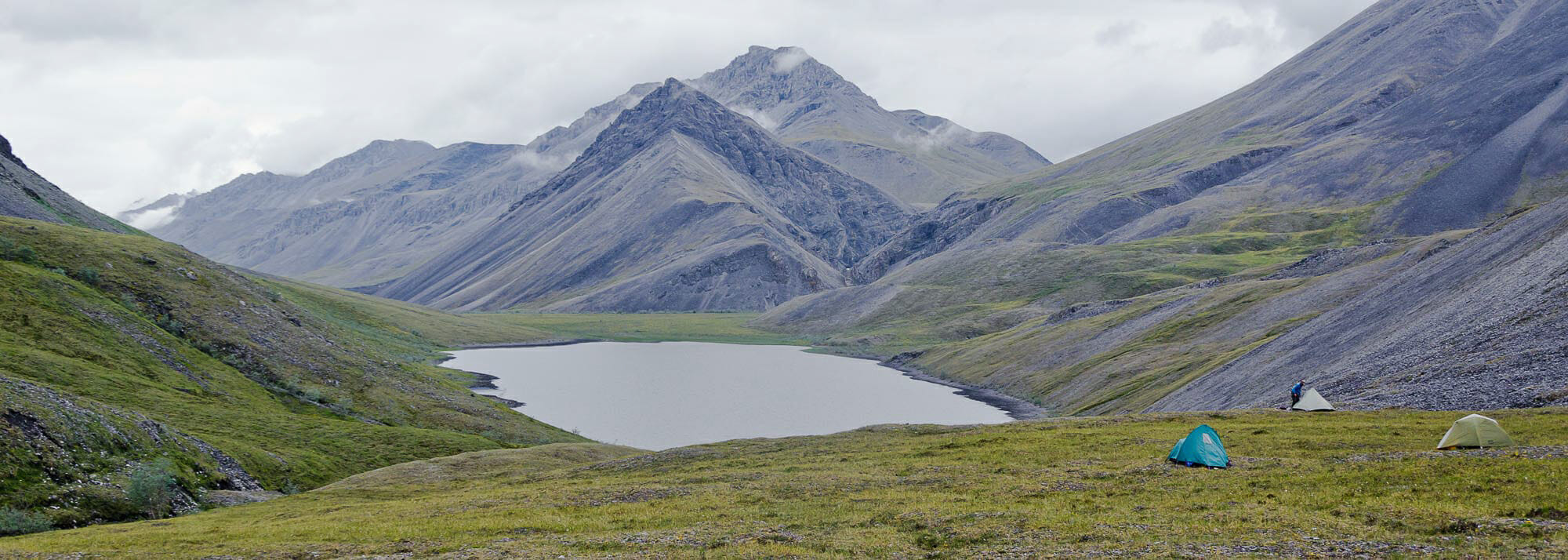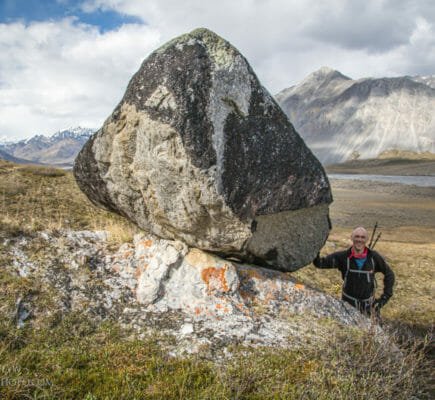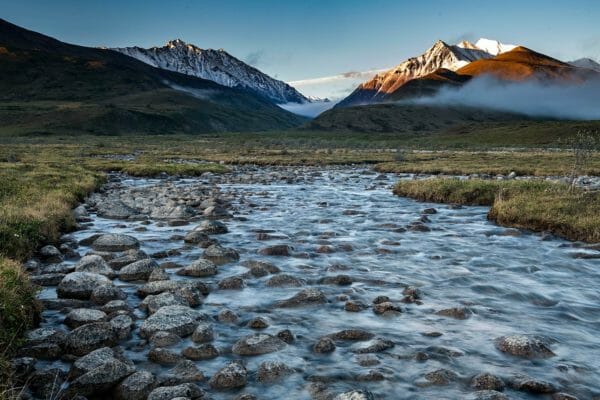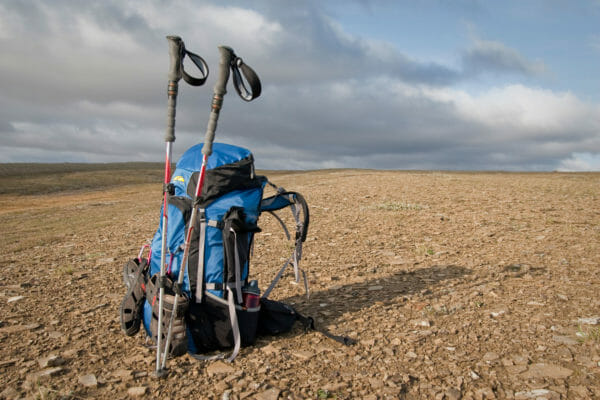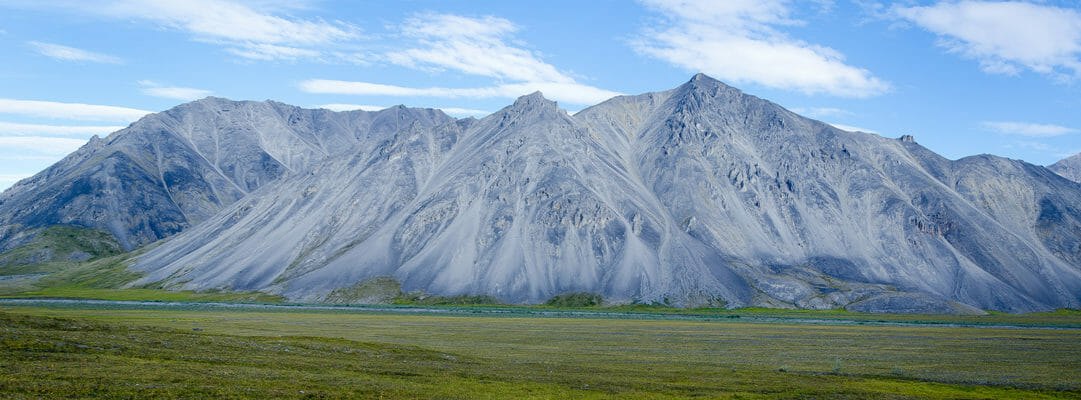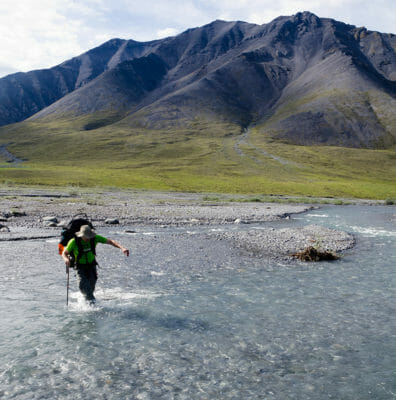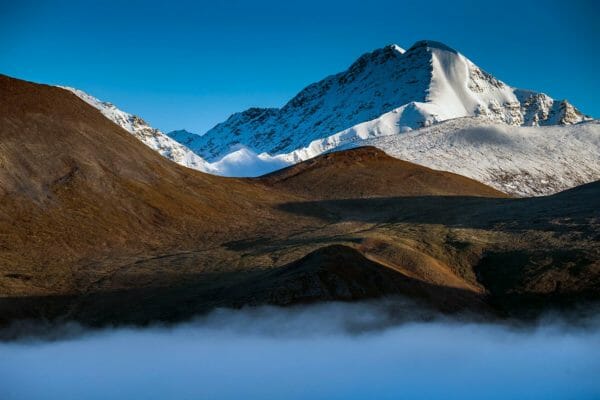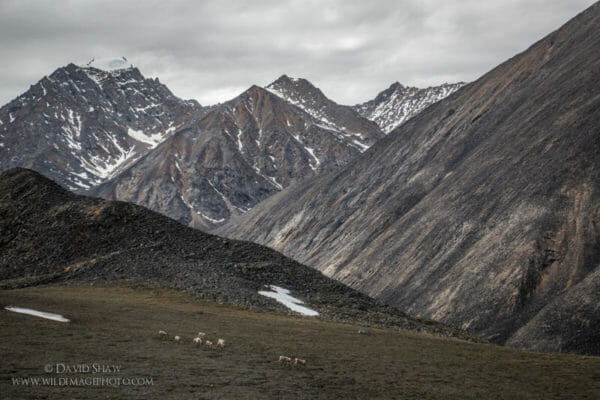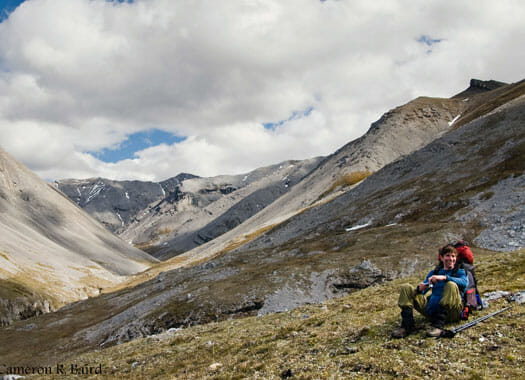Last updated: August 18, 2025
Itinerary
What follows is a general flow of events. Expect the unexpected and prepare to be flexible.
June 16
Meet your guide for a pre-trip meeting at 4pm in Fairbanks at Arctic Wild headquarters.
June 17
Fly 250 miles north from Fairbanks, across the Yukon River and the Arctic Circle to the Gwich’in Athabascan village of Arctic Village. Then we will meet our pilot for the beautiful flight up the Ch’idriinjik (Chandalar) river to the heart of the Brooks Range. After hiking upstream for an hour or two we will make camp and enjoy a hearty dinner.
June 18
We will linger here in the heart of the mountains and day hike from a base camp eating up some of the weight in our packs and adjusting to the midnight sun and the varied terraine.
June 19- 22
Each day will bring its own surprises. We have about 30 miles to cover and plenty of time. If all goes according to plan, there will be a layover day near the pass and we can explore the high country with a light day pack. The day we go over the pass will be long and strenuous, but other days will have time left for side trips and relaxation. The hiking will be varied from soft tundra to long gravel bars and rocky slopes. The camping is excellent and the scenery unbeatable.
June 23 - 24
Once over the Divide, the mountains grow taller and the valleys wider. There are a couple of places with artesian spring where we find unique botanical communities and even a few gnarled trees. We can detour to X-ray lake where mauve mountains reflect in clear water and we can sleep with the gently lapping water under the midnight sun. From here is is all downhill to our rendezvous with the airplane on the Marsh Fork of the Canning.
June 25
From our camp by the Marsh Fork of the Canning we pack up early and begin listening for our airplane. When it arrives we reluctantly load our gear and ourselves for the flight back through Arctic Village and on to Fairbanks, arriving late in the afternoon.




